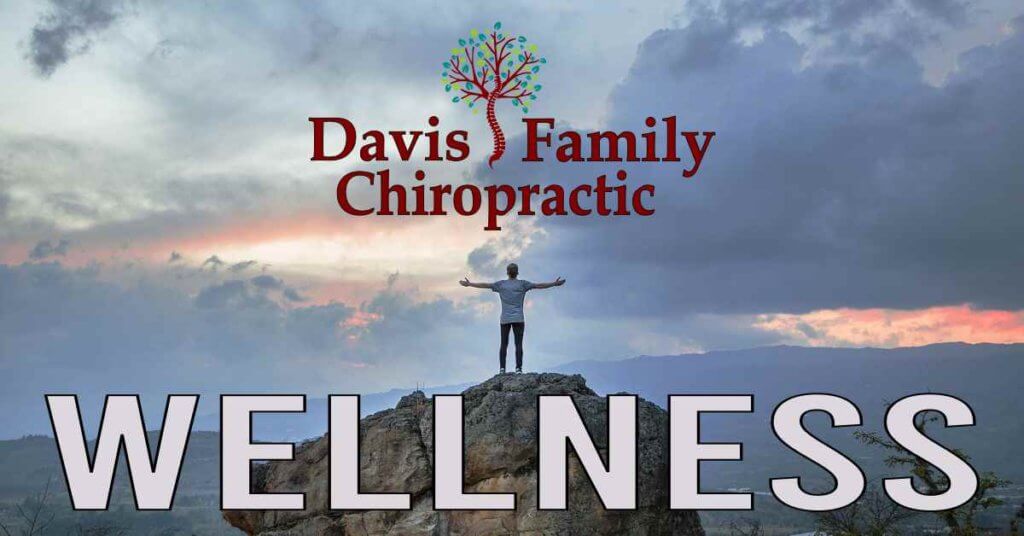As the global population ages, the healthcare needs of older adults have become a significant concern. Unfortunately, commonly prescribed medications, which are intended to manage various health conditions, may lead to increased mortality rates and mental health decline among this demographic. However, an alternative approach to healthcare, such as chiropractic care, coupled with natural healing and nutrition, can offer potential benefits to keep older people off prescribed medications. In this article, we will explore the findings of researchers regarding the risks associated with commonly used drugs and discuss how chiropractors can help older adults maintain their health and well-being without relying heavily on medications.
The Risks of Commonly Used Drugs
Recent research, such as a comprehensive review of medication use in older adults, highlights the challenges associated with the aging population and the widespread prescription of medications [1]. The study suggests that the prevalence of polypharmacy, the simultaneous use of multiple medications, is a significant concern among older individuals [14]. Polypharmacy can lead to adverse drug interactions, increased healthcare utilization, and potential harm to older adults [16]. Additionally, the physiological changes that occur with aging can affect drug metabolism and increase the vulnerability of older adults to medication-related complications [20][21][22].
Increased Incidence of Death and Mental Health Decline
Several studies have shown a link between commonly prescribed medications and increased mortality rates and mental health decline among older adults. A study conducted in the United States found that potentially inappropriate medications were associated with higher healthcare utilization and costs, emphasizing the need for appropriate medication management [16]. Furthermore, research has shown an alarming increase in the use of potentially inappropriate medications among older adults, which further exacerbates the risks [17].
The Role of Chiropractic Care
Chiropractic care, with its focus on natural healing and holistic approaches, offers a potential alternative to heavy reliance on medications for older adults. Chiropractors are healthcare professionals who specialize in the diagnosis and treatment of musculoskeletal conditions, primarily through manual adjustments of the spine and other non-invasive techniques. While chiropractors do not prescribe medications, they can work in conjunction with other healthcare providers to optimize patient care.
Promoting Natural Healing and Nutrition
One of the primary ways chiropractors can help older adults avoid or reduce their reliance on prescribed medications is by promoting natural healing and nutrition. Chiropractors often emphasize lifestyle modifications, including exercise, proper nutrition, and stress reduction techniques, to improve overall health and well-being. These interventions can have a positive impact on various health conditions, such as chronic pain, arthritis, and age-related musculoskeletal issues, potentially reducing the need for medications [25].
Addressing Underlying Causes
Chiropractors focus on addressing the underlying causes of health problems rather than solely treating symptoms. They perform thorough assessments to identify biomechanical dysfunctions, spinal misalignments, and nerve interference that may contribute to pain or other health issues. By restoring proper alignment and function of the spine and nervous system, chiropractors aim to enhance the body’s natural healing abilities, potentially reducing the need for medications [25].
Collaboration with Healthcare Providers
Chiropractors recognize the importance of collaboration with other healthcare providers, including medical doctors and specialists. Through a multidisciplinary approach, healthcare professionals can work together to ensure comprehensive and personalized care for older adults. Chiropractors can contribute their expertise in musculoskeletal health and natural healing, while medical doctors can manage medications and provide necessary medical interventions when needed.
Conclusion:
The risks associated with commonly prescribed medications for older adults highlight the importance of exploring alternative healthcare options. Chiropractic care, with its emphasis on natural healing, nutrition, and addressing underlying causes, can play a vital role in helping older adults reduce their reliance on medications.
References
1. URL: https://www.ncbi.nlm.nih.gov/pmc/articles/PMC8294219/ TITLE: An Update on Medication Use in Older Adults: a Narrative Review
2. Sander M, Oxlund B, Jespersen A, Krasnik A, Mortensen EL, Westendorp RGJ, Rasmussen LJ. The challenges of human population ageing. Age Ageing. 2015;44(2):185–187. doi: 10.1093/ageing/afu189. [PMC free article] [PubMed] [CrossRef] [Google Scholar]
3. GBD 2019 Disease and Injuries Collaborators. Global burden of 369 disease and injuries in 204 countries and territories, 1990-2019: a systematic analysis for the Global Burden of Disease Study 2019. Lancet. 2020;396(10258):1204–1222. doi: 10.1016/S0140-6736(20)30925-9. [PMC free article] [PubMed] [CrossRef] [Google Scholar]
4. Dall TM, Gallo PD, Chakrabarti R, West T, Semilla AP, Storm MV. An aging population and growing disease burden will require a large and specialised health care workforce by 2025. Health Aff. 2013;32(11):2013–2020. doi: 10.1377/hlthaff.2013.0714. [PubMed] [CrossRef] [Google Scholar]
6. Rowley WR, Bezold C, Arikan Y, Byrne E, Krohe S. Diabetes 2030: insights from yesterday, today and future trends. Popul Health Manag. 2017;20(1):6–12. doi: 10.1089/pop.2015.0181. [PMC free article] [PubMed] [CrossRef] [Google Scholar]
7. GBD 2016 Neurology Collaborators Global, regional, and national burden of neurological disorders, 1990-2016: a systematic analysis for the Global Burden of Disease study 2016. Lancet Neurol. 2019;18(5):459–480. doi: 10.1016/S1474-4422(18)30499-X. [PMC free article] [PubMed] [CrossRef] [Google Scholar]
9. Alzheimer’s Association 2020 Alzheimer’s disease facts and figures. Alzheimers Dement. 2020;16(3):391–460. doi: 10.1002/alz.12068. [PubMed] [CrossRef] [Google Scholar]10. Lee PG, Cigolle C, Blaum C. The co-occurrence of chronic disease and geriatric syndromes: the health and retirement study. J Am Geriatr Soc. 2009;57(3):511–516. doi: 10.1111/j.1532-5415.2008.02150.x. [PubMed] [CrossRef] [Google Scholar]
11. Nguyen H, Manolova G, Daskalopoulou C, Vitoratou S, Prince M, Prina AM. Prevalence of multimorbidity in community settings: a systematic review and meta-analysis of observational studies. J Cormorb. 2019;9:2235042X1987093. doi: 10.1177/2235042X19870934. [PMC free article] [PubMed] [CrossRef] [Google Scholar]
12. Ofori-Asenso R, Lee Chin K, Curtis AJ, Zomer E, Zoungas S, Liew D. Recent patterns of multimorbidity among older adults in high-income countries. Popul Health Manag. 2019;22(2):127–137. doi: 10.1089/pop.2018.0069. [PubMed] [CrossRef] [Google Scholar]
13. Marengoni A, Angleman S, Melis R, Mangialasche F, Karp A, Garmen A, Meinow B, Fratiglioni L. Aging with multimorbidity: a systematic review of the literature. Ageing Res Rev. 2011;10(4):430–439. doi: 10.1016/j.arr.2011.03.003. [PubMed] [CrossRef] [Google Scholar]
14. Charlesworth CJ, Smit E, Lee DSH, Alramadhan F, Odden MC. Polypharmacy among adults aged 65 years and older in the United States: 1998-2010. J Gerontology A Biol Med Sci. 2015;70(8):989–995. doi: 10.1093/gerona/glv013. [PMC free article] [PubMed] [CrossRef] [Google Scholar]
15. Gao L, Maidment I, Matthews FE, Robinson L, Brayne C. Medical Research Council Cognitive Function and Ageing Study. Medication usage change in older people (65+) in England over 20 years: findings from CFAS I and CFAS II. Age Ageing. 2018;47(2):220–225. doi: 10.1093/ageing/afx158. [PMC free article] [PubMed] [CrossRef] [Google Scholar]
16. Clark CM, Shaver AL, Aurelio LA, Feuerstein S, Wahler RG, Daly CJ, Jacobs DM. Potentially inappropriate medications are associated with increased healthcare utilisation and costs. J Am Geriatr Soc. 2020;68(11):2542–2550. doi: 10.1111/jgs.16743. [PMC free article] [PubMed] [CrossRef] [Google Scholar]
17. Fralick M, Bartsch E, Ritchie CS, Sacks CA. Estimating the use of potentially inappropriate medications among older adults in the United States. J Am Geriatr Soc. 2020;68(12):2927–2930. doi: 10.1111/jgs.16779. [PubMed] [CrossRef] [Google Scholar]18. Giarratano A, Green SEL, Nicolau DP. Review of antimicrobial use and considerations in the elderly population. Clin Interv Aging. 2018;13:657–667. doi: 10.2147/CIA.S133640. [PMC free article] [PubMed] [CrossRef] [Google Scholar]
19. Drenth van-Maanen AC, Wilting I, PAF J. Prescribing medicines to older people – how to consider the impact of ageing on human organ and body functions. Br J Clin Pharmacol. 2020;86(10):1921–1930. doi: 10.1111/bcp.14094. [PMC free article] [PubMed] [CrossRef] [Google Scholar]
20. Stader F, Kinvig H, Penny MA, Battegay M, Siccardi M, Marzolini C. Physiologically based pharmacokinetic modelling to identify pharmacokinetic parameters driving drug exposure changes in the elderly. Clin Pharmacokinet. 2020;59(3):383–401. doi: 10.1007/s40262-019-00822-9. [PubMed] [CrossRef] [Google Scholar]
21. Thürmann PA. Pharmacodynamics and pharmacokinetics in older adults. Curr Opin Anaesthesiol. 2020;33(1):109–113. doi: 10.1097/ACO.0000000000000814. [PubMed] [CrossRef] [Google Scholar]
22. Hilmer SN, Wu H, Zhang M. Biology of frailty: implications for clinical pharmacology and drug therapy in frail older people. Mech Aging Dev. 2019;181:22–28. doi: 10.1016/j.mad.2019.111119. [PubMed] [CrossRef] [Google Scholar]
23. Liau SJ, Lalic S, Sluggett JK, Cesari M, Onder G, Vetrano DL, Morin L, Hartikainen S, Hamina A, Johnell K, Tan ECK, Visvanathan R, Bell JS. Optimizing Geriatric Pharmacotherapy through Pharmacoepidemiology Network (OPPEN) Medication management in frail older people: consensus principles for clinical practice, research and education. J Am Med Dir Assoc. 2020;22(1):43–49. doi: 10.1016/j.jamda.2020.05.004. [PubMed] [CrossRef] [Google Scholar]
24. Hogan DB, Maxwell CJ. Frailty and unintended risks of medications. Curr Epidemiol Rep. 2020;7(1):16–24. doi: 10.1007/s40471-020-00226-5. [CrossRef] [Google Scholar]
25. Alhusein N, Macaden L, Smith A, Stoddart KM, Taylor AJ, Killick K, Kroll T, Watson MC. ‘Has she seen me?’: a multiple methods study of the pharmaceutical care needs of older people with sensory impairment in Scotland. BMJ Open. 2018;8:e023198. doi: 10.1136/bmjopen-2018-023198. [PMC free article] [PubMed] [CrossRef] [Google Scholar]
26. Lau ETL, Steadman KJ, Cichero JAY, Nissen LM. Dosage form modification and oral drug delivery in older people. Adv Drug Deliv Rev. 2018;135:75–84. doi: 10.1016/j.addr.2018.04.012. [PubMed] [CrossRef] [Google Scholar]
27. Schenk A, Eckardt-Felmberg R, Steinhagan-Thiessen E, Stegemann S. Patient behaviour in medication management: findings from a patient usability study that may impact clinical outcomes. Br J Clin Pharmacol. 2020;86(10):1958–1968. doi: 10.1111/bcp.13946. [PMC free article] [PubMed] [CrossRef] [Google Scholar]
28. Dooley J, Bass N, Livingston G, McCabe R. Involving patients with dementia in decisions to initiate treatment: effect on patient acceptance, satisfaction and medication prescription. Br J Psychiatry. 2019;214(4):213–217. doi: 10.1192/bjp.2018.201. [PubMed] [CrossRef] [Google Scholar]
29. Smith MVA, Adams D, Carr C, Mengoni ME. Do people with intellectual disabilities understand their prescription medication? A scoping review. J Appl Res Intellect Disabil. 2019;32(6):1375–1388. doi: 10.1111/jar.12643. [PMC free article] [PubMed] [CrossRef] [Google Scholar]
30. Qato DM, Wilder J, Schumm P, Gillet V, Alexander GC. Changes in prescription and over-the-counter medication and dietary supplement use among older adults in the United States, 2005 vs 2011. J Am Med Assoc. 2016;176(4):473–482. [PMC free article] [PubMed] [Google Scholar]
31. Agbabiaka TB, Wilder B, Watson LK, Goodman C. Concurrent use of prescription drugs and herbal medicinal products in older adults: a systematic review. Drugs Aging. 2017;34(12):891–905. doi: 10.1007/s40266-017-0501-7. [PMC free article] [PubMed] [CrossRef] [Google Scholar]
32. Per BL, Taylor AW, Gill TK. Prescription medicines, over-the-counter medicines and complementary and alternative medicines use: a comparison between baby boomers and older South Australians. AIMS Public Health. 2019;6




Such an outstandig article! You pointed all these important topics which are very complicated for our society. You gave us informative and helpful article. Thank you so much for sharing it with us.
Such an outstanding article! You gave us very important information about the healt care and its secureness. Thank you so much for sharing this valuable article with us. You are great!!